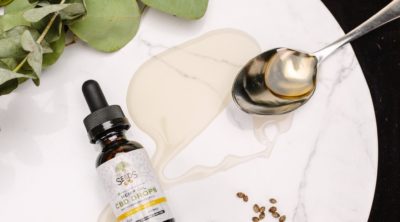
When it comes to alternative treatment for cancer, guanabana fruit is often brought to the limelight. But, does guanabana and cancer treatment have any kind of correlation? Find it out in the ensuing HolisticZine article.
Guanabana is used to refer both, the spiny fruit and the tree (Annona muricata) that bears the same. This sour tasting fruit related to custard apple and pawpaw tree, is considered a wonderful remedy for treating cancer. As per some researchers, guanabana is several thousand times more potent to combat cancerous cells. But, how far is it effective in treating cancer? What makes this fruit an active anticancer agent? Well, the answer to these questions, lies in the following paragraphs.
Guanabana and Cancer Treatment
By appearance, guanabana fruit is similar to cherimoya. This tropical fruit is known by varied names in different parts of the world. Thus, the soursop of Caribbean, the graviola fruit of Spain, and guanabana fruit of Central America mean one and same thing. While the young fruit is consumed as a vegetable, the pulp of ripe fruit is eaten raw or prepared by making juices. Even though the ripe fruit tastes somewhat sour, its taste is still palatable for eating out of hand. As per personal preferences, the whitish pulp is eaten alone or in the juice form.
All parts of the tree, including the leaves, bark, roots, fruits, and seeds, are used in herbal medicine since a long time. However, it was only in the late 20th century that scientists conducted rigorous studies to find the link between this fruit and cancer cure. Speaking about the application of soursop for cancer treatment, the leaves and trunk are basically used for the purpose. The acetogenins and other phytochemicals isolated from guanabana are found to be the main active ingredients for fighting malignant cells.
What makes guanabana so special about cancer cure, is the specificity of target cells. In contrast to chemotherapy intervention, graviola juice and extract, target only malignant cells, thereby protecting the healthy cells. Hence, body cells that are constantly dividing (like the hair cells) are left unharmed with this treatment approach, which is the main concern with chemotherapy. In short, there are virtually no side effects of using this tropical fruit for the treatment of cancer. As a consequence, patients remain active during the treatment course, and signs of improvement are observed without side effects.
The exception of using guanabana in cancer cure is also attributed to the fact that, it is effective against several types of cancer, especially that of the lungs, prostate, colon, and pancreas. Other cancer types that respond to guanabana extract are stomach cancer, breast cancer, kidney cancer, ovarian cancer, and liver cancer. In a study report, it is claimed that graviola cancer cure strategy shows prompt responses for fighting 20 different cancer types. Thus, this tropical fruit is considered a wonder remedy for one of the most life-threatening diseases, cancer. However, the dosage of this fruit depends on various factors, like, the patient’s age, gender, overall health, etc. It is always essential to consult your physician before opting for this or any other natural treatment when dealing with cancer or any other disease, for that matter.
Besides the anticancer property of the fruit, it is highly appreciated for its antimicrobial properties. It is effective for treating bacterial, fungal, parasitic, and other pathogenic infections. Consuming this fruit strengthens the immune system, and prepares the body for fighting against infectious diseases. Thus, making this tropical fruit a part of your daily diet is a sure way to minimize the risk of cancer and other ailments.
However, till date, there are no solid studies to justify, whether guanabana and cancer cure are related or not. Currently, research studies, to find the anticancer potency of Annonaceous acetogenins, are ongoing in several laboratories worldwide. If the claimed benefits of the fruit in cancer treatment are proven effective, it would be one big breakthrough in medical science. Can you imagine using a simple tropical fruit for treating almost all forms of malignant cells? Sounds promising, right!


